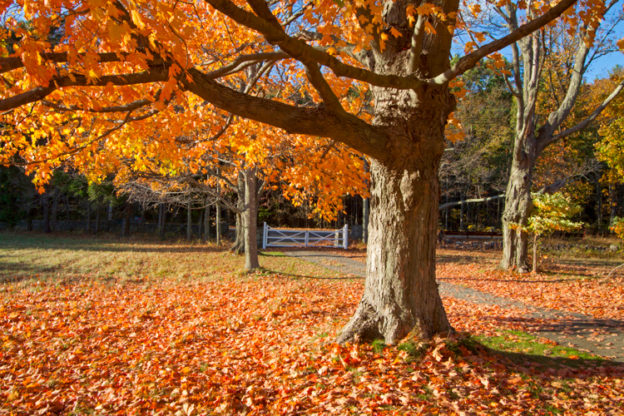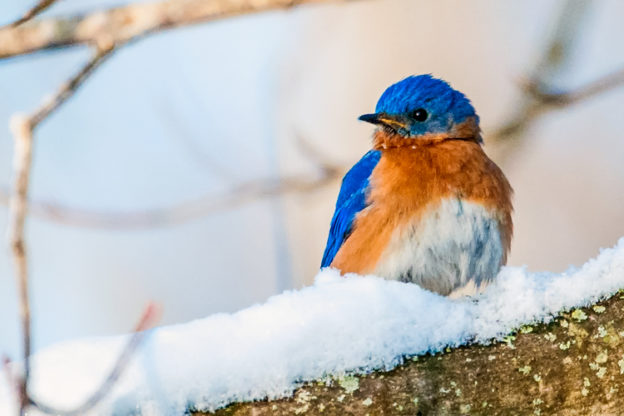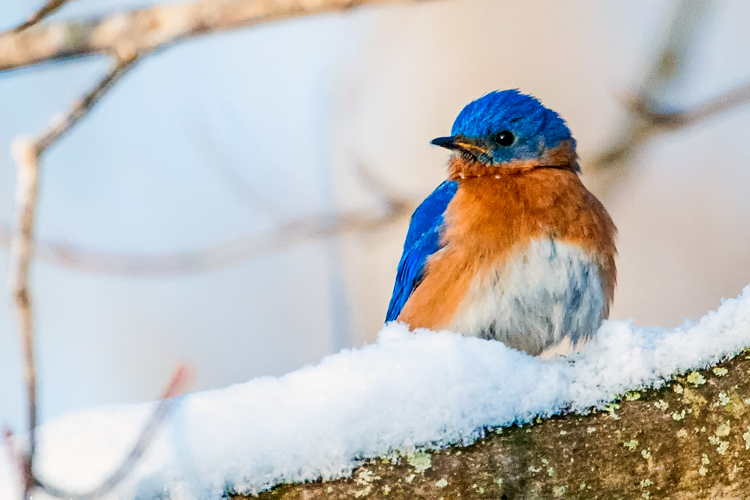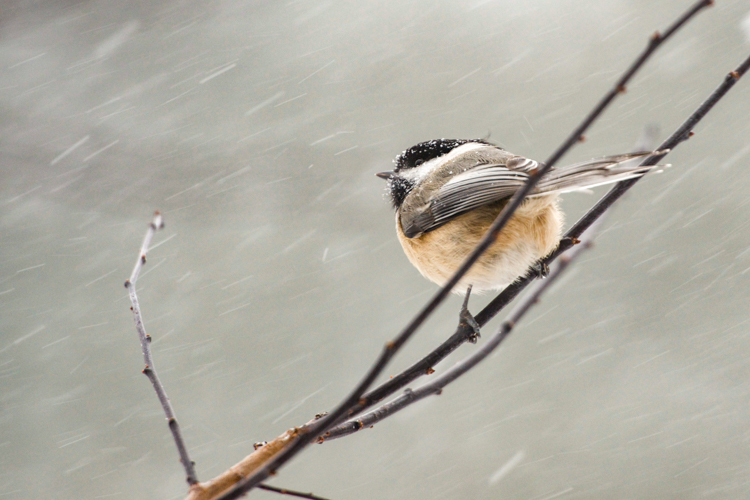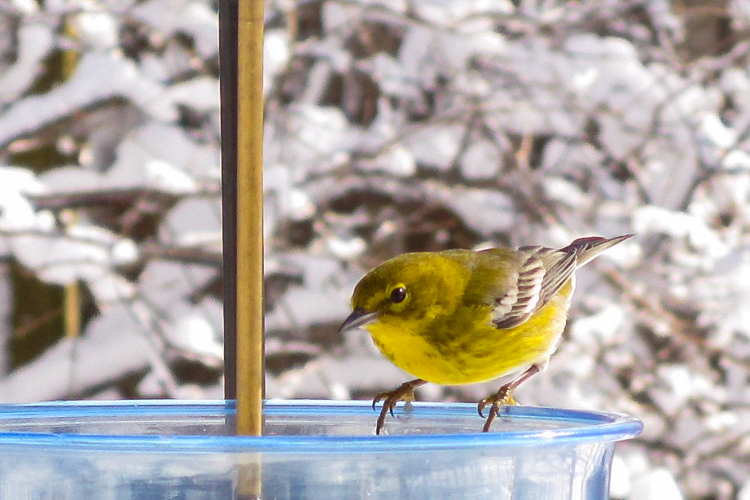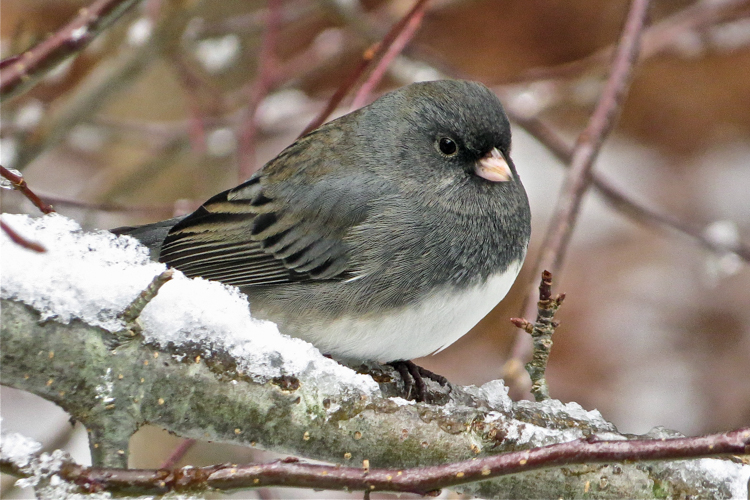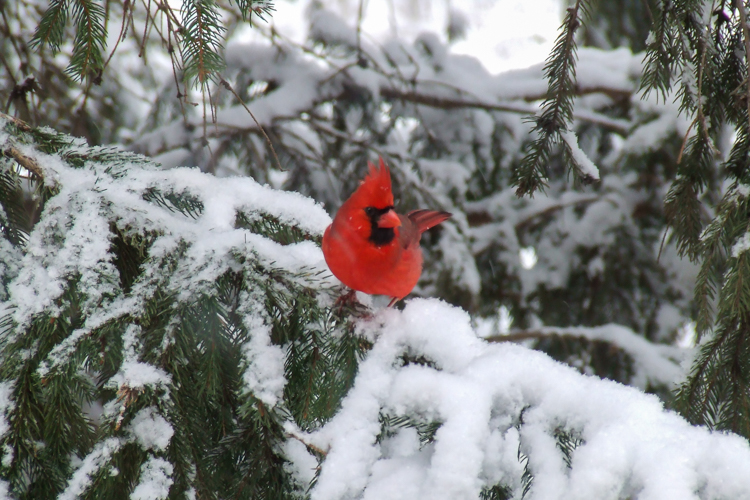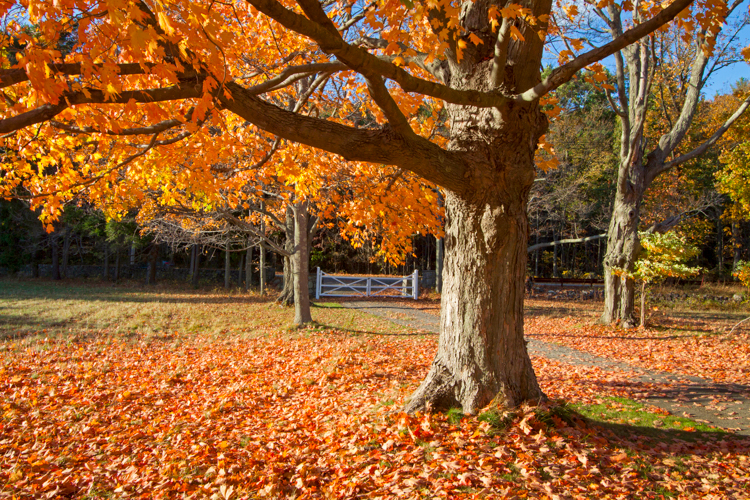
Fall is a magical time in New England as oaks, maples, and aspens reveal their spectacular red, orange, and yellow hues. Before you know it, though, those leaves have fallen to the ground, carpeting lawns and gardens and prodding residents to reluctantly pick up their rakes and perform the annual ritual of “autumn cleanup.”
Well, we’ve got good news: you’re officially off the hook. Not only will your back thank you, so will our native pollinators, including bees, butterflies, beetles, and moths, who rely on leaf litter for food and shelter to help them survive winter.
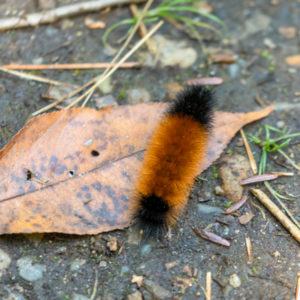
The vast majority of butterfly and moth species don’t migrate (Monarchs are a well-known exception) but rather overwinter in leaf litter—the familiar Woolly Bear caterpillar, the larval form of the Isabella Tiger Moth, is one of these.
Some, like Red-banded Hairstreak butterflies, lay their eggs on fallen leaves that newly hatched caterpillars will happily devour and—if it’s late in the season—may even use as a shelter through winter.
The hollow stalks of ornamental grasses and flowers like daylilies provide convenient, protected compartments for cavity-nesting insects like Mason and Carpenter bees.
Here are a few tips to make your fall garden cleanup easier and more pollinator-friendly:
- Leave the leaves! When you bag and throw them away, you’re probably tossing out precious pollinator larvae and eggs, too.
- Pile leaves around the base of trees, shrubs, and perennial plants to protect their roots and provide shelter for pollinators.
- Put off trimming back dead stalks from ornamental grasses and flowers until spring, once nighttime temperatures are consistently about 50°F and any nesting insects have reemerged.
- Save some leaves in a pile and add them gradually to your backyard compost bin to supplement your “green” food waste with “brown” matter.
So feel free to put off raking or skip the fall cleanup altogether—as it turns out, it’s one of the most valuable things you can do to protect and help native pollinators thrive.


